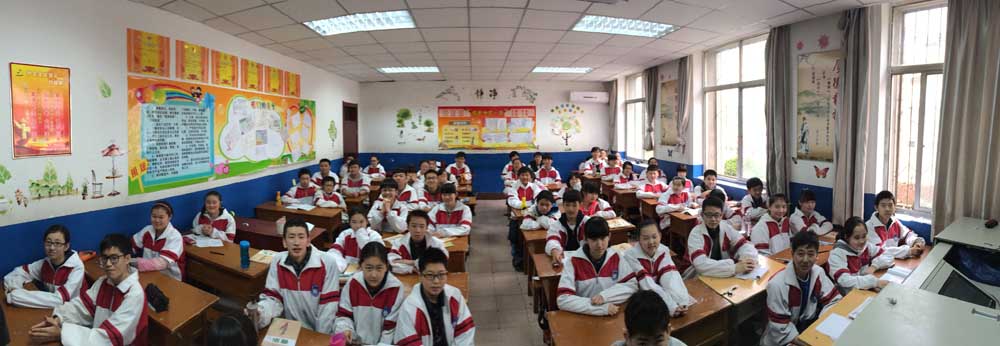AHS principal explores Chinese schools
Published 5:34 am Wednesday, April 8, 2015

- On his trip to China and Xi'an No. 85 Middle School, Astoria High School Principal Lynn Jackson said he witnessed highly dedicated students in an unparalleled high-stakes testing environment.
Astoria High School Principal Lynn Jackson learned a lot during his recent trip to China as an emissary for U.S. high schools. Absenteeism is not an issue, he said, and neither is not turning in homework. But Jackson said he experienced a high school environment dominated by rote memorization and preparation for the gaokao, China’s life-altering national college entrance exam.
“What’s amazing is that these students are incredibly, incredibly dedicated,” said Jackson, who observed the students of Xi’an No. 85 Middle School as part of the China Exchange Initiative.
The program was founded by late philanthropist Houghton Freeman to increase exchanges and interest in Asian studies. Jackson traveled to China March 22 for two weeks, along with a principal from Creswell Middle School; superintendents from Rainier, Lebanon, Salem-Keizer and John Day school districts; and two charter school directors as part of an exchange between Oregon and Shaanxi, a province in northwestern China. Xi’an, where Jackson went, is the capital of the Shaanxi province, an ancient capital of China and a city of more than 8 million.
No. 85 was ranked 13th out of more then 200 middle schools in terms of performance on the gaokao, Jackson said, a relatively elite institution where children’s parents are mostly professionals.
The New York Times reported in December on a “cram school” of more than 20,000 students preparing around the clock for the gaokao. More than 9 million students a year take the test, the report said, for which many often start preparing in elementary school and see failing it as a ticket to manual, migrant labor.
Only nine years of education is compulsory in China, from elementary through junior middle school. Students take the zhongkao, the senior high school entrance exam, to get into senior middle school. Out of an average grade size of 450 students, Jackson said, he heard that maybe 50 to 60 percent make it to the high school level.
“The pressure of that summative test … drives all instruction at the high school,” Jackson said, relaying his observations of placards at the front of class with a gaokao countdowns and students leaving school late at night after studying.
He said he might have had a skewed perspective, No. 85 being a high-level school where many parents are professionals and many children study at internationally prestigious universities — akin to using Jesuit High School, a private Catholic high school in Portland, to look at Oregon’s educational system. During his trip to Xi’an, Jackson sat down several times with students, who conveyed the pressures they face to make it to class under any circumstance and study harder than other students.
“One student said ‘We don’t have dreams,’” Jackson said, adding an administrator told him about the problem in universities, where students who have managed to pass the gaokao often lack direction.
The teachers aren’t pushy or overly demanding, Jackson said students told him, but rather, it’s more of a societal issue.
“There’s a human element to this,” he said, conveying the immense pride and emotion felt by students and parents during a coming-of-age ceremony he compared to graduation day in the U.S.
In a country of 1.3 billion, Jackson said a principal queried him, how can educators equitably find the cream of the crop without testing?
The New York Times article reported how Chinese schools are trying, albeit with resistance, to lower the reliance on the gaokao and expand curriculum.
Jackson said he sees a middle ground between the discipline of China’s schools and students, and the creativity of America’s.
Along with Xi’an No. 85, Jackson visited several universities and a Juilliard-like arts school, the Shaanxi Vocational College of Arts.
Along with shadowing educators at various schools, he visited ancient monuments around Xi’an and the Shaanxi province, including the Terracotta Army, the Shaanxi History Museum, the Xi’an Bell Tower in the center of the city and the Qianling Mausoleum. Jackson also visited the Great Wall of China, Beijing, the Forbidden City and other national monuments. The China Exchange Initiative covered much of the cost, and Jackson paid for his airfare.
As part of the Oregon-Shaanxi exchange, eight Chinese principals will travel to the U.S. later this year. Jackson said Principal Wu from Xi’an No. 85 will be among the group.





